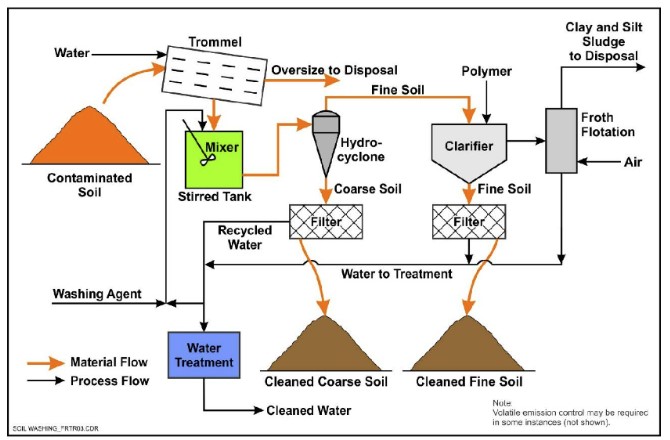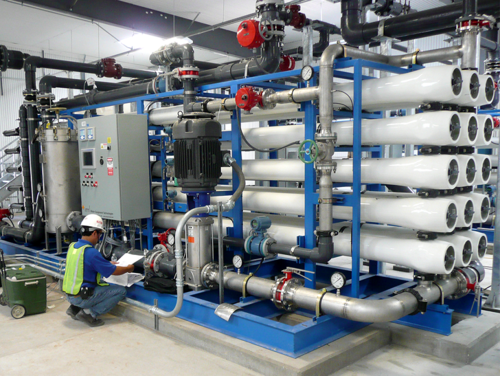PFAS Waste Management in Landfills to Minimize Environmental Harm
Advanced Techniques for Reliable PFAS Contamination Removal
The consistent obstacle of PFAS contamination necessitates the exploration of sophisticated elimination methods that can successfully resolve these hazardous materials. Cutting-edge technologies, such as sophisticated oxidation procedures and numerous adsorption techniques, have arised as encouraging solutions in mitigating PFAS from impacted atmospheres. Furthermore, the role of regulative structures fit these technologies can not be neglected, as they determine the rate and instructions of removal initiatives. As we analyze these advanced techniques, it ends up being crucial to assess their functional applications and the wider effects for environmental health and wellness and plan.
Recognizing PFAS Characteristics
Although per- and polyfluoroalkyl substances (PFAS) have actually been commonly used in various commercial and customer products as a result of their one-of-a-kind residential or commercial properties, their persistence in the setting presents considerable challenges to public wellness and safety. PFAS are a group of artificial chemicals defined by a carbon-fluorine bond, one of the best chemical bonds understood, which contributes to their extraordinary stability and resistance to degradation. This security enables PFAS to accumulate in the environment and living microorganisms, causing prospective negative health and wellness effects.
These same buildings contribute to their environmental perseverance, as PFAS do not conveniently break down through natural procedures. Recognizing the chemical properties of PFAS is important for establishing efficient methods to take care of and minimize their ecological impact.
Cutting-edge Removal Technologies
The perseverance of PFAS in the setting has actually stimulated the growth of cutting-edge removal modern technologies focused on properly removing these contaminants from affected communities. Amongst the most promising methods are innovative oxidation procedures (AOPs), which use powerful oxidants to break down PFAS substances into less harmful materials. AOPs can be customized to target particular PFAS structures, enhancing their efficiency.
One more emerging modern technology is the usage of adsorption media, such as triggered carbon and ion exchange resins, which can uniquely capture PFAS from infected water. These products have shown substantial removal effectiveness, although routine substitute and regrowth are needed to preserve performance.
Membrane layer purification techniques, consisting of reverse osmosis and nanofiltration, are likewise getting grip in PFAS remediation. These methods can successfully divide PFAS from water, supplying a viable solution for treating infected sources. In addition, thermal treatment approaches, such as incineration, can break down PFAS right into non-toxic by-products, though they call for careful monitoring to control discharges.
Jointly, these innovative removal innovations stand for significant improvements in the ongoing battle versus PFAS contamination, offering different methods to restore affected atmospheres and shield public health.

Bioremediation Techniques
Bioremediation strategies provide a promising technique to attending to PFAS contamination by utilizing the all-natural abilities of microorganisms to weaken these consistent compounds (m270 waste management). This approach includes using microorganisms, fungis, and other germs that can metabolize or transform PFAS materials right into much less dangerous byproducts
Current developments in molecular biology and environmental microbiology have enhanced our understanding of microbial neighborhoods and their potential duties in PFAS degradation. Scientists are actively discovering particular pressures of bacteria, such as Pseudomonas and Bacillus, which have actually demonstrated the capacity to break down specific PFAS substances.
In situ bioremediation strategies, where bacteria are boosted directly in infected environments, can be especially efficient. This strategy commonly involves the application of nutrients or electron donors to promote microbial development and activity. Additionally, ex lover situ methods, such as bioreactors, enable controlled conditions that can optimize deterioration prices.
Regardless of the promise of bioremediation, difficulties stay, consisting of the intricate nature of PFAS substances and the need for comprehensive field screening - m270 waste management. Proceeded r & d will be important to fine-tune these strategies and analyze their performance in varied environmental contexts
Adsorption and Filtration Methods
Addressing PFAS contamination typically includes using adsorption and purification approaches, which are made to go now get rid of these relentless chemicals from water and dirt. Among the various strategies, activated carbon adsorption is widely utilized because of its high area and porosity, making it possible for reliable capturing of PFAS molecules. Granular triggered carbon (GAC) systems are specifically favored for dealing with huge volumes of polluted water, while powdered triggered carbon (SPECIAL-INTEREST GROUP) can be used for smaller-scale applications.
Ion exchange resins also reveal promise in PFAS removal, operating by trading PFAS ions with less dangerous ions in the water. This technique has shown effectiveness in concentrating PFAS substances, promoting their subsequent elimination. In addition, membrane filtration strategies, such as reverse osmosis and nanofiltration, operate by utilizing semi-permeable membranes to different PFAS from water, efficiently decreasing their concentrations.
While these methods work, they have to be very carefully chosen based on the specific PFAS substances existing and the ecological context. Constant advancements in products scientific research and engineering are bring about the growth of novel adsorbents and filtration systems that enhance elimination performances and lower functional expenses, thus improving overall removal efforts.
Regulatory and Plan Factors To Consider
Exactly how can reliable regulative frameworks boost the administration of PFAS contamination? Thorough policies are important to make sure a coordinated and durable response to the difficulties postured by per- and polyfluoroalkyl compounds (PFAS) Rules can establish clear standards for monitoring, reporting, and remediating PFAS-contaminated websites, fostering responsibility amongst industries and public entities. (m270 waste management)

In addition, monetary motivations and gives can be integrated into plans to urge the adoption of advanced remediation modern technologies. Policymakers should likewise focus on r & d, guaranteeing that arising approaches for PFAS elimination are validated and executed properly.
In addition, public awareness and interaction are important parts of any regulative approach, empowering communities to support for their health and wellness. Ultimately, a well-structured governing setting will not only boost the management of PFAS contamination however likewise advertise lasting practices that safeguard future generations.
Conclusion
In recap, the intricacy of PFAS contamination requires the adoption of sophisticated find more remediation methods. Innovative technologies such as advanced oxidation procedures, adsorption strategies, and membrane layer filtering have demonstrated substantial efficiency in getting rid of these consistent compounds from contaminated water resources. In addition, regulative frameworks must develop to support the execution of these innovations, making sure risk-free and effective monitoring of PFAS toxins. Continued r & d in this area stay vital to dealing with the challenges positioned by PFAS contamination.